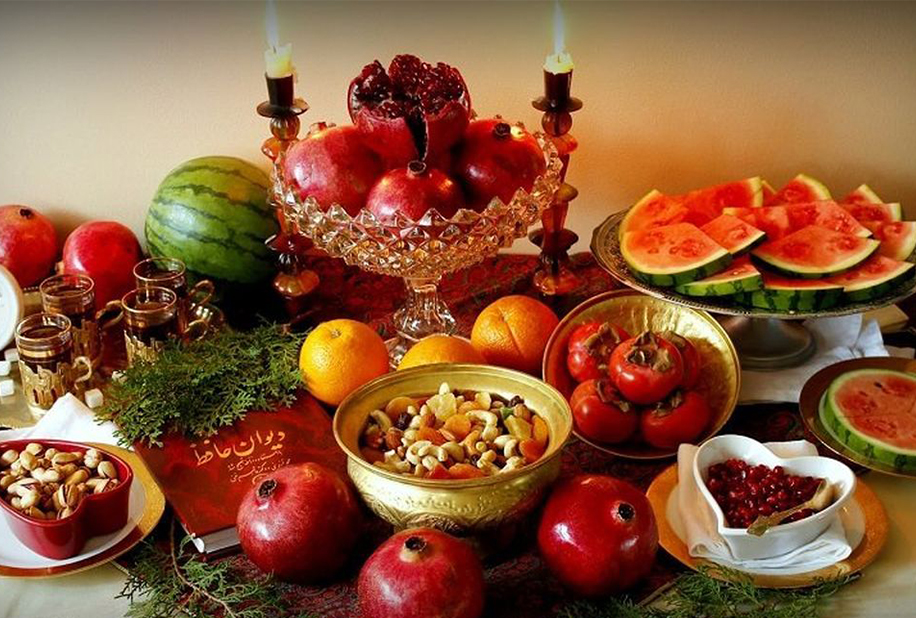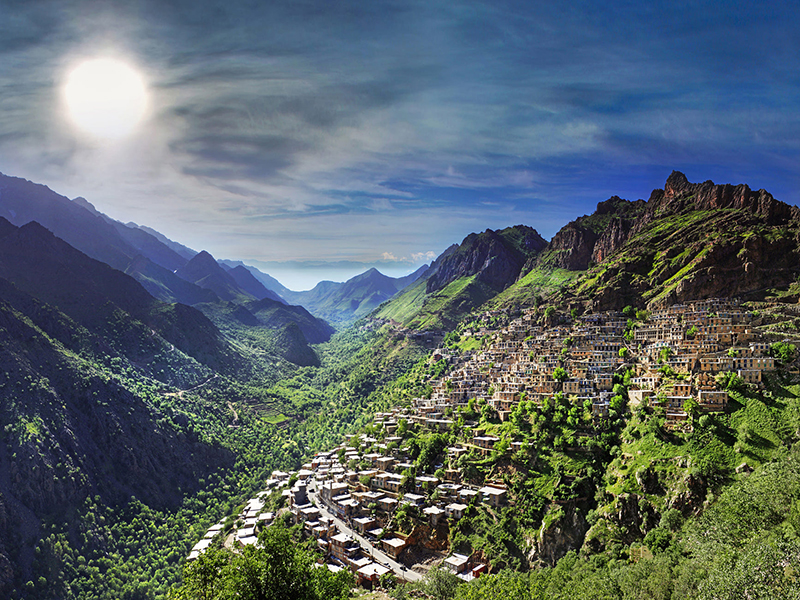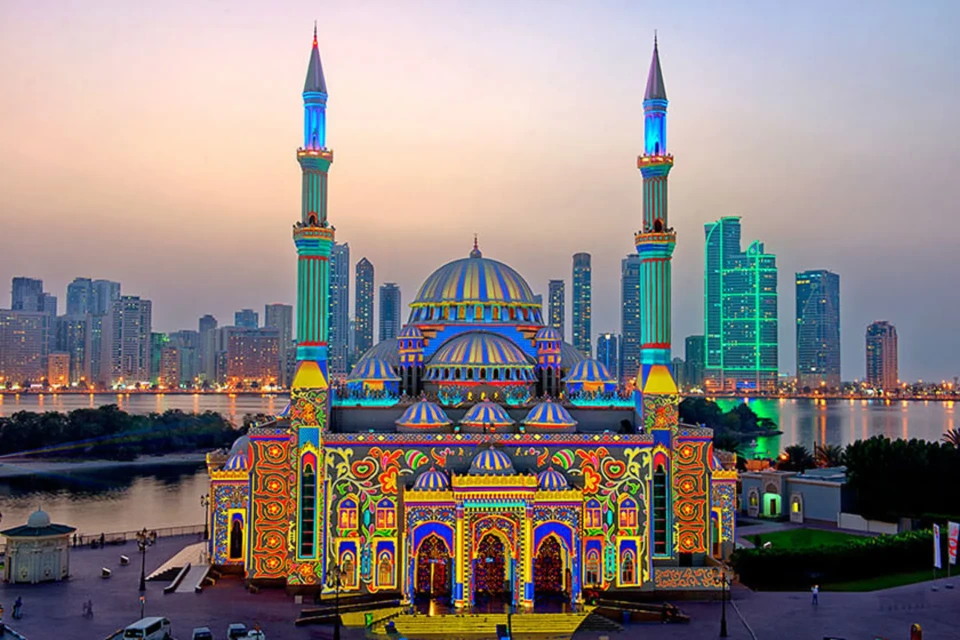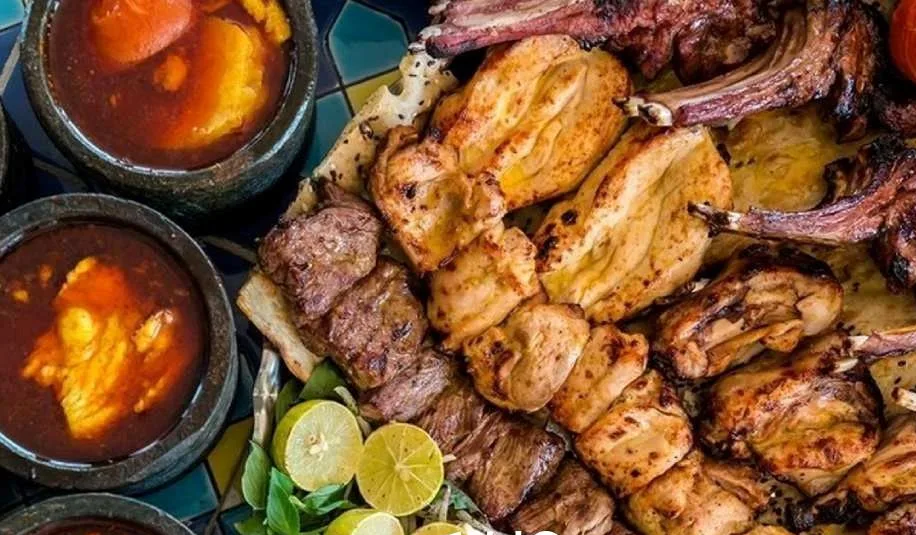What is Yalda night in Iran?
Yalda night, also known as Shab-e Yalda, is an ancient Iranian celebration that marks the longest night of the year, which usually falls on the eve of the winter solstice, around December 21st. This tradition has its roots in the ancient Persian festival that predates the advent of Islam in Iran.
The word “Yalda” means “birth” and refers to the birth of the sun, signifying the victory of light over darkness as the days start to grow longer after the longest night. It’s a time for families and friends to gather together, stay up late into the night, and celebrate the arrival of winter.
During Yalda night, people traditionally eat special fruits such as pomegranates, watermelons, and nuts, recite poetry, tell stories, and spend time in each other’s company. Reading the poetry of Hafez, a revered Persian poet, is a common practice during this celebration. The fruits and nuts served on Yalda are symbolic, representing the colors of dawn and the life-affirming powers of the sun.
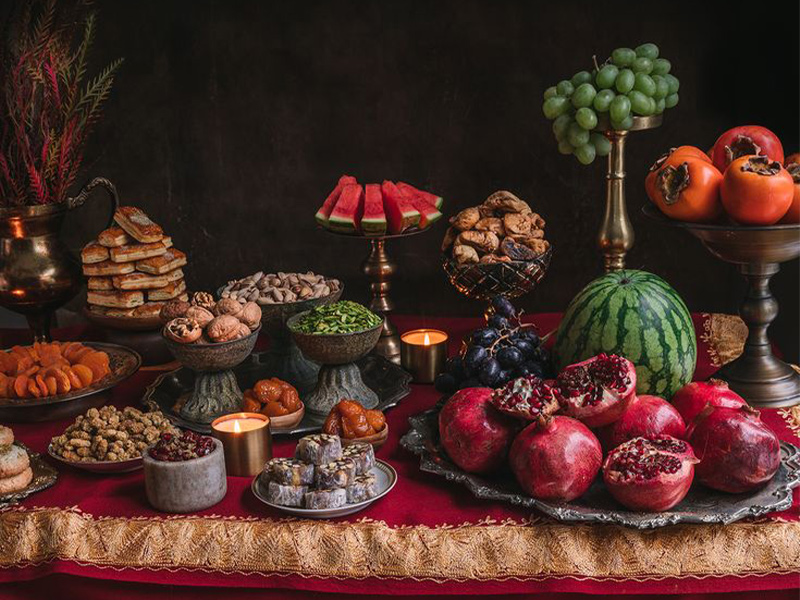
It’s a joyful occasion that emphasizes the warmth of companionship, the sharing of stories, and the belief in the renewal of light and life as the long winter nights begin to wane. This tradition holds a significant place in Persian culture, and the celebrations vary in different regions of Iran, but the essence of coming together, feasting, and celebrating the triumph of light remains a central theme.
Yalda night is deeply rooted in Persian culture and has been celebrated for thousands of years. The significance of this celebration extends beyond the astronomical event of the winter solstice, holding cultural, social, and spiritual importance in Iranian traditions.
Symbolism and Traditions
Yalda night emphasizes the eternal battle between darkness and light. It’s a time for gathering with family and friends, symbolizing unity, joy, and hope. Pomegranates, with their vibrant red color, symbolize the radiant glow of life and the sun’s warmth. Watermelons, with their green rind and red flesh, signify the cycle of life. Nuts, especially ajil (a mix of nuts and dried fruits), are also shared among the guests, symbolizing fertility and the cycle of life.
The symbolism and traditions associated with Yalda night in Iran carry deep cultural and spiritual significance. Here’s a deeper dive into the symbolic elements and traditions:
Pomegranates : Pomegranates are central to Yalda night. The deep red color represents the hues of the dawn and the sun’s glow. It symbolizes life, love, and fertility. Families typically place a large, ripe pomegranate on the table. Its bright color is a metaphor for the sunrise, signifying the resurgence of light and warmth.
Watermelons: Watermelons, with their green rind and red flesh, symbolize the cycle of life. The red inside signifies the warmth of life, while the green exterior represents growth and renewal. Watermelons are often shared and enjoyed among family and friends during the celebrations.
Nuts and Dried Fruits: A mix of nuts and dried fruits, known as “ajil,” is often served. The variety of nuts and dried fruits represents abundance, fertility, and the circle of life. Sharing these treats signifies the hope for a fruitful year ahead.
Hafez’s Poetry: The Persian poet Hafez holds a revered place in Iranian culture. During Yalda night, families and friends often gather to read and recite his poetry. Hafez’s verses are believed to hold mystical and philosophical insights. There’s a tradition called “fal-e Hafez,” where individuals open the book of Hafez’s poetry at random, seeking guidance or divination by interpreting the poem opened as guidance for the coming year.
Bonfires and Light: In some regions, lighting fires or candles is part of the tradition. Bonfires are symbolic of the sun’s victory over darkness, representing the triumph of light and warmth over the long, dark night. Gathering around these fires is a way of welcoming the longer days that will follow.
Family and Togetherness: Yalda night places a strong emphasis on family and togetherness. It’s a time for family members to gather, share stories, laugh, and strengthen their bonds. The warmth of companionship during the coldest night of the year signifies the importance of unity and support.
Feasting and Celebration: Feasting and sharing traditional Iranian dishes are central to the celebration. Families prepare special foods, often including rice dishes, kebabs, stews, and sweets, to enjoy during the gathering.
Yalda night encapsulates a rich tapestry of symbols and traditions, all woven together to celebrate the triumph of light over darkness and to embrace the promise of renewal, warmth, and the continuity of life. It’s a celebration deeply ingrained in Iranian culture, fostering unity, joy, and the hope for a prosperous year ahead.
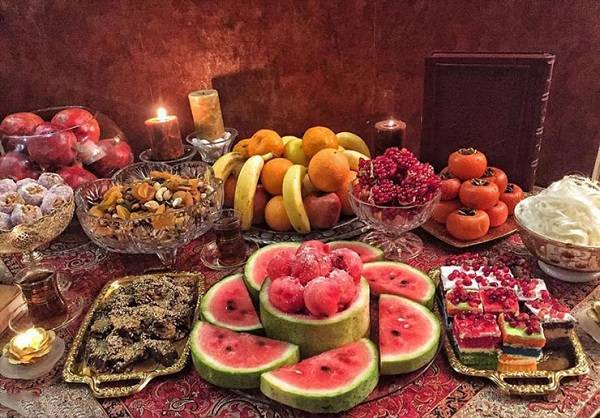
Poetry and Storytelling
Persian poetry, especially the works of Hafez, is an integral part of Yalda celebrations. People often gather to recite Hafez’s poetry, engage in storytelling, and share anecdotes. Hafez’s divan (collection of poems) is believed to reveal hidden truths and provide guidance for the future. Iranians often have a tradition called “fal-e Hafez,” which involves randomly opening the poet Hafez’s book and interpreting the poem on that page as a sort of fortune-telling or seeking guidance for the coming year.
Poetry and storytelling are integral parts of Yalda night celebrations in Iran, contributing to the richness and depth of the cultural event. Here’s more about their significance:
Hafez’s Poetry: Hafez, a revered Persian poet from the 14th century, plays a central role in Yalda celebrations. His Divan, a collection of poems, contains rich verses filled with mysticism, love, and wisdom. Many Iranians believe that Hafez’s poetry offers insights into life, the human condition, and the future. During Yalda, families and friends often gather to recite and reflect on Hafez’s poetry. There’s a tradition called “Khooneh be Khooneh” where one person starts reciting a poem, and the next person continues with another verse, creating a chain of poetry readings.
“Fal-e Hafez”: This tradition involves a form of fortune-telling or seeking guidance through Hafez’s poetry. It’s believed that by randomly opening Hafez’s book and reading the poem on that page, one can find insights or guidance for the year ahead. People interpret the lines of the randomly chosen poem as an indicator of what might happen in the future or as advice for making decisions in the coming year.
Storytelling: Alongside poetry, storytelling holds a significant place in Yalda celebrations. Elders, parents, or knowledgeable individuals in the community often share folktales, myths, and historical stories. These tales may be passed down through generations, carrying moral lessons, cultural wisdom, and entertainment. Storytelling during Yalda creates a warm and inviting atmosphere, fostering a sense of connection and unity among the participants.
Oral Tradition and Cultural Transmission: Yalda night serves as a platform for passing down traditions, values, and wisdom from one generation to another. Through the recitation of poetry and the sharing of stories, the cultural heritage is preserved and cherished. It’s a way of ensuring that the rich oral traditions and the essence of Persian literature continue to be treasured and carried forward.
The combination of poetry and storytelling during Yalda night creates an ambiance of introspection, wisdom, and entertainment. It fosters a sense of shared culture and tradition, bringing people together through the beauty of language, literature, and the wisdom encapsulated in these timeless forms of expression.
Food and Festivities
Families come together to enjoy a feast, usually with a spread of traditional Iranian dishes. Kebabs, rice dishes, and stews might be part of the meal. Alongside these, the aforementioned symbolic fruits and nuts take center stage. Sweets and pastries like baklava or gaz (a Persian nougat) might also be served.
Social Connection
Yalda night emphasizes the importance of social connections, family, and friends. It’s a time to strengthen bonds, share happiness, and support one another, especially as the long and cold winter nights begin. It’s also a time for reconciliation and forgiving past grievances, symbolizing the renewal of relationships.
Continuing Traditions
Despite modernization, many Iranians, both within the country and abroad, continue to celebrate Yalda night. While some traditions may have evolved, the core elements of gathering, feasting, and celebrating the victory of light remain fundamental to the celebration.
Overall, Yalda night holds immense cultural significance, fostering a sense of community, joy, and hope as Iranians come together to welcome the rebirth of the sun and the promise of longer, brighter days ahead.

